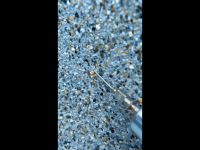Finally planning to pull the trigger and re-plaster the old in-ground pool. Had few questions:
1) There are some hairline vertical cracks / horizontal as well, and I am expecting may be some crack underneath the plaster that are structural. Contractor cannot say if structure or not without removal plaster. If structural, he mentioned that they don't do staples to fix the crack. Instead he says, they remove the shell near the cracked area (till they hit the dirt), put in new rebar connecting to old shell and shoot gunite. There is a minimum cost to bring in equipment / some minimum material cost to shoot gunite. I am wondering if this is the right approach and has merits over structural staples or has downsides that I need to aware of (and increasing the cost for fixing structural cracks).
2) Is it okay to perform this in winter in Northern California, as long as there is no rain?
3) I am also replacing the decking with pavers as the old decking is heavily cracked / settled. Given that we don't know the status of when the plumbing is done, is it worth upgrading the skimmer / return jets (leaving main drain alone with old)?
Thanks!
1) There are some hairline vertical cracks / horizontal as well, and I am expecting may be some crack underneath the plaster that are structural. Contractor cannot say if structure or not without removal plaster. If structural, he mentioned that they don't do staples to fix the crack. Instead he says, they remove the shell near the cracked area (till they hit the dirt), put in new rebar connecting to old shell and shoot gunite. There is a minimum cost to bring in equipment / some minimum material cost to shoot gunite. I am wondering if this is the right approach and has merits over structural staples or has downsides that I need to aware of (and increasing the cost for fixing structural cracks).
2) Is it okay to perform this in winter in Northern California, as long as there is no rain?
3) I am also replacing the decking with pavers as the old decking is heavily cracked / settled. Given that we don't know the status of when the plumbing is done, is it worth upgrading the skimmer / return jets (leaving main drain alone with old)?
Thanks!













